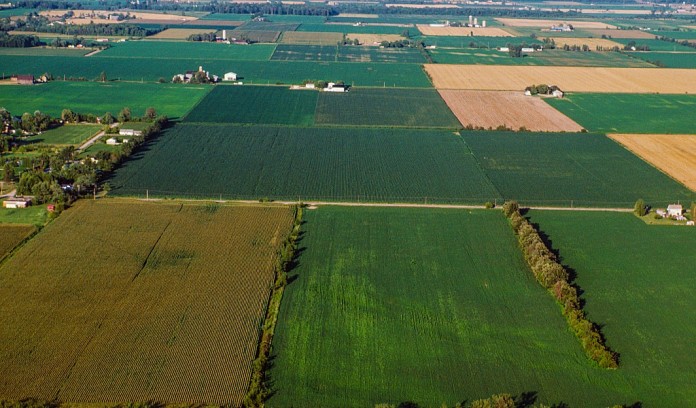ST. LOUIS — Amid ongoing weakness in commodity prices, Midwest and Midsouth farm income and quality farmland values continued to decline during the first quarter of 2016, according to the latest Agricultural Finance Monitor published by the Federal Reserve Bank of St. Louis.
The survey for the report was conducted from March 15-March 31, 2016. The results were based on the responses of 32 agricultural banks located in Arkansas, Illinois, Indiana, Kentucky, Mississippi, Missouri and Tennessee.
This quarter’s survey also included two special questions that asked bankers about farm loan portfolio repayment and the percentage of customers who had borrowed up to their loan limits.
Farm income erodes
During the first quarter, bankers reported that farm income continued to slide compared with the same period a year ago. The farm income index value declined for the seventh consecutive quarter to an all-time survey low of 20. The St. Louis Fed survey was launched in the fall of 2012.
“Lower commodity prices, in addition to no commodity subsidies, have made it difficult to realize a positive cash flow projection for 2016,” said a Tennessee agricultural lender.
The majority of bankers reported that the downturn in the farm sector is continuing to reduce expenditures, with the index values for household and capital spending also hitting all-time lows.
The household spending index registered at 50, down sharply from the previous quarter’s value of 72. Meanwhile, the capital spending index fell to a level of 30, down from the previous quarter’s value of 38.
Farmland values
During the first quarter of 2016, bankers reported that quality farmland values plunged an average 6.4 percent from year-ago levels. This represented the steepest quarterly drop in the history of the survey. Meanwhile, the value of ranchland or pastureland remained steady compared with year-ago levels.
What’s next
Looking ahead at the second quarter, a majority of the bankers surveyed said they expected to see declines for both quality farmland and ranchland or pastureland prices.
Cash rents for quality farmland and ranchland or pastureland also fell in the first quarter of 2016 compared with a year earlier. This trend is expected to continue into the second quarter.
Loan repayment
The survey asked two special questions about repayment rates for banks farm loan portfolios. The first question asked bankers to indicate the percentage of the dollar amounts of their farm loan portfolios in each of four repayment classifications.
The vast majority of loans, about 78 percent, were classified as having no significant repayment problems. About 14 percent were classified as having minor repayment problems, with issues that could be remedied fairly easily.
Meanwhile, close to 7 percent were classified as having major repayment problems that would require more collateral and/or long-term workout arrangements. Only 2 percent were classified as having severe repayment problems that would likely result in loan losses and/or forced sales of real assets.
The second question asked bankers to estimate the percentage of their customers who have borrowed up to their loan limit. On average, they indicated only 34 percent of customers had borrowed up to their limits












